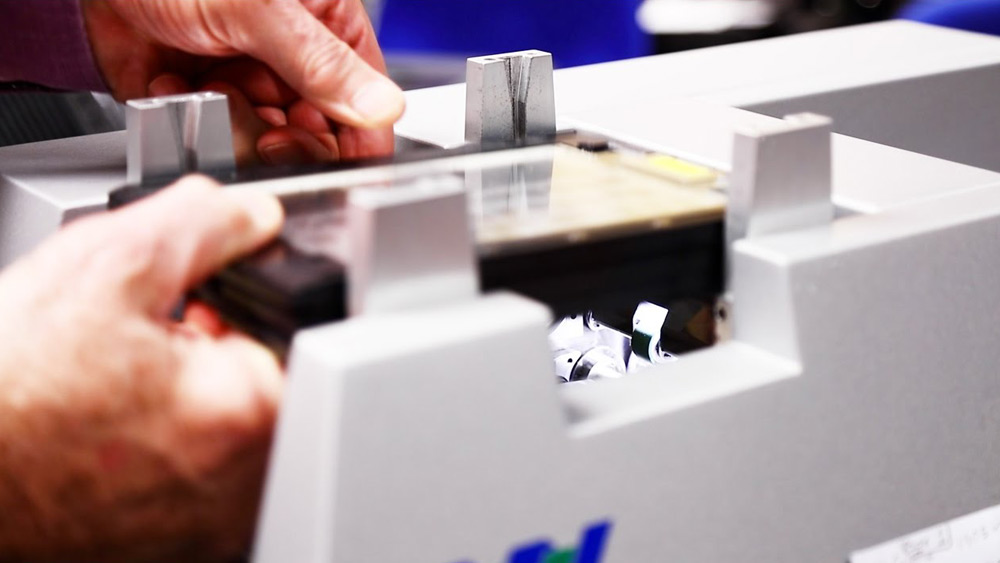There are huge quantities of microfilm material in the archives of organisations and institutions in…
Digital Microfilm
by Paul Negus, Managing Director, The Microfilm Shop
Until a few years ago there had been a raging debate about the future of microfilm – Was it dead? How many months will it take until it dies? Is it still alive? And the favourite -What is microfilm?
The microfilm industry was defending its corner saying that digital will never take off and the digital industry just dismissed microfilm out of hand. There was not always a lot of thought put to the arguments from either side, it was just a case of perceived right and wrong.
Well look at how things have changed in the last couple of years. Digital has seen enormous growth and is the document management product to have. Microfilm, whilst experiencing a small decline, has by no means been cut out of the picture. I believe that the microfilm industry can be compared to the paper industry except that it is about 5 to 10 years behind. This is because about 5 to 10 years ago everybody was dismissing paper, proclaiming instead the “paperless office”. As we now know this was just not true, no matter how sensible it sounded at the time. Most current estimates put the growth in the use of paper at between 20 and 25% per annum. Maybe this growth in the use of paper is a temporary thing as digital systems get better and, more importantly, become more accepted in day to day office life.
We do not know the answer but even if the worse case scenario were to happen for paper, it would take another 10 years for paper to be sidelined. In total that would mean that paper had been given another 20 years in the fast lane- worse case scenario! However we know that paper will never disappear because it is analogue and, as such, is very user friendly to the human race. We all have eyes and we know that for the foreseeable future that will be the main tool that we will use to look at information. Do we know what type of digital technology will be with us in 100 years or even 20 years? It is a good guess that we will all be using digital technology in 20 and 100 years but how much will it have cost us to do that? How much information will have been lost in the constant migrations? How many digital companies will have come and gone along with their products that hold all of your information?
I know what you are thinking, if I only need to keep that information for 3 or 4 years what is the problem? You are perfectly correct and by choosing digital you have chosen the right product. However, what if some of that information e.g. Staff, Pension, Medical, Life Assurance, Financial, Business critical and Historical information, needs to be kept for 5, 10, 20, 50 or an indefinite number of years? What about information that needs to be kept for legal, policy and value reasons?
This is where microfilm fits in and just like paper it is here to stay except that microfilm takes up to 98% less space than paper and it is significantly cheaper to produce duplicates for security and disaster recovery reasons. However the main reason for the resurgence in microfilm is its perfect fit with digital technology. A very recent AIIM White Paper entitled “Availability and Preservation – Long term Availability and Preservation of Digital Information” supports this view. I quote: – “Current [microfilm] retrieval technology is interoperable with digital systems”, “By rendering digital information to microfilm as uncoded, analogue images, Organisations may create technology-proof repositories” and ultimately “The marriage of a sensibly managed digital archive to a Reference [microfilm] Archive should provide an economical short-, mid-, and long term solution to the availability and preservation of digital information”. To obtain your copy of this White Paper contact AIIM UK at (0)1753 592 769 or AIIM US on 301 587 8202.
A great number of hybrid systems are now being bought that use digital for the distribution and access of information but are using microfilm for the preservation of the important and historical information. In other words microfilm is being used as a safety net for digital information. There have been some excellent recent examples of this:
State of Michigan makes it law that any government information that needs to be kept for longer than 10 years must have one copy stored in an analogue format i.e. paper or film.
Both the US 2000 and the UK 2001 census do a U-turn on the storage media to be used for all census forms. Both will now download all of the scanned images to microfilm via Kodak ArchiveWriters as the most cost effective and safe method for long term storage. The American National Archives (NARA) and John Carlin (Archivist of the United States) endorsed this policy. Since then both the Australian and Philippine governments have decided to go the same way.
The Singapore government announces its new strategy for all digital information created by any government agency. If this digital information is to be kept for the longterm, then the relevant digital files must be written to microfilm. Currently they estimate that approximately 5% of all Singapore government digital files will be archived this way.
The above are very fine examples of high profile end user applications. However they do not account for the large number of smaller users who are starting to adopt the same policy. This is borne out by the number of document conversion bureaux who are now investing in the technology to write digital files to microfilm on your behalf.
The microfilm industry has certainly changed in the last 10 years. In applications where microfilm was used for the distribution of information, digital will replace microfilm. However, conversely, where digital has been used for the preservation of information, microfilm will now start to replace digital. In the perfect system the two technologies will be used side by side to complement one another. If the system is based more on distribution then digital will be the main component, if preservation is the most important factor then microfilm will be the main component. Microfilm has two main attributes – it is easy and cheap to scan into a digital system and it is easy and cheap for digital information to be written to it. This is reflected in the fact that these two areas are the two fastest growing areas in the microfilm industry today as I can explain in more detail:
1) Scanning film into a digital system – High volume production microfilm scanners are the fastest selling microfilm products at this time, converting large legacy microfilm collections to digital images. An important note is that these scanned microfilm collections are not being destroyed, they are being maintained and added to for disaster recovery reasons. Another fast moving area is the sale of
economic low volume microfilm scanners. This is for applications where microfilm collections are being maintained as the storage medium of choice but the microfilm images are scanned on an ad-hoc basis and e-mailed or networked to where they are needed. In both of these scenarios the microfilm collections carry on being added to. If digital technology and/or language changes in 5 years (as it tends to do) it is not a problem – you just scan the same microfilm into whatever the latest technology is.
2) Writing digital images to film – There are now several organisations that offer digital to microfilm equipment and there are dozens of bureaus that offer the service. You can even buy PC and Web based document management packages that have archive options, you just click the archive button and your files are written and indexed to film. This way your imaging systems are freed up to handle the current information. Then, by using the microfilm scanning options mentioned above, the images can be bought back into your imaging system now or 5, 10, 20, 50 or 100 years into the future – no matter what imaging system you will have at that time.
Every company that I know of in the microfilm industry that is doing well is offering at least one of these services or products. If the microfilm industry is tracking the paper industry, as I believe, then it will be an industry to watch in the coming years.
Long may Digital Microfilm be preserved!



